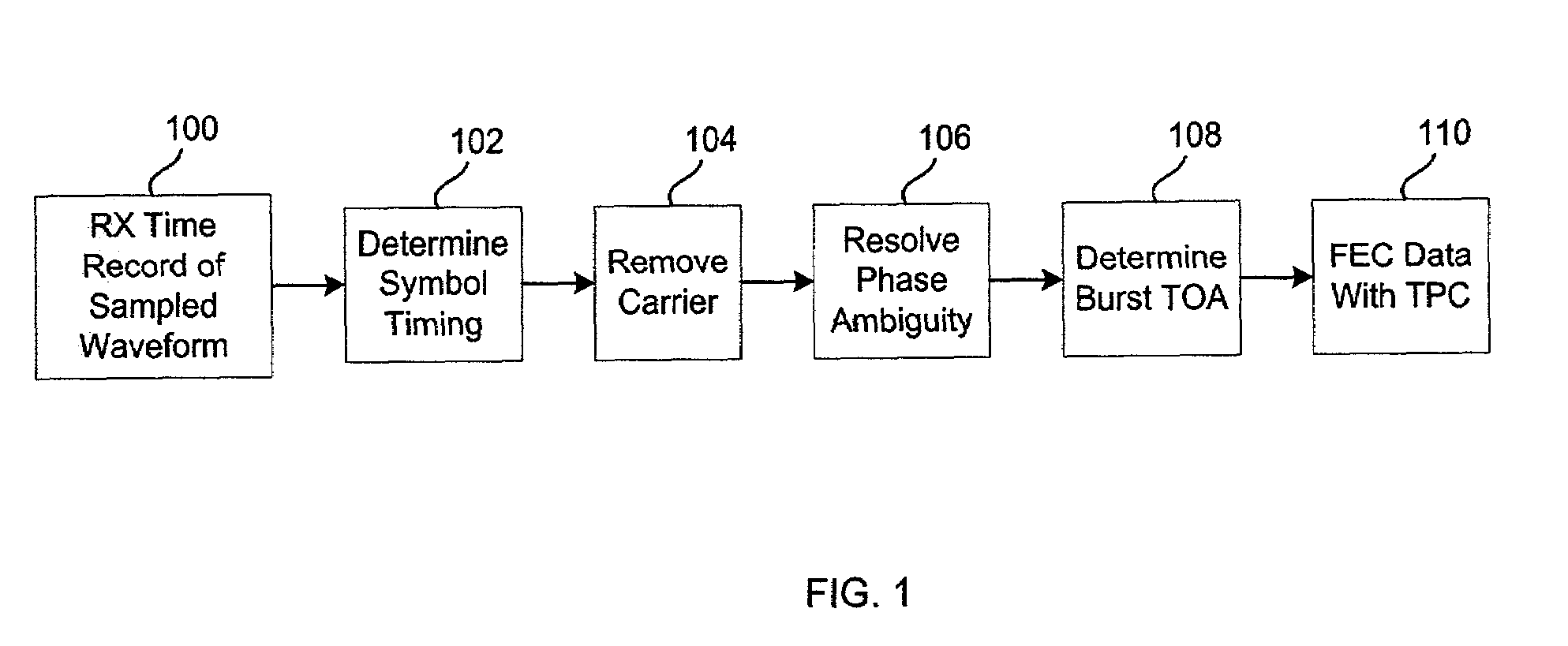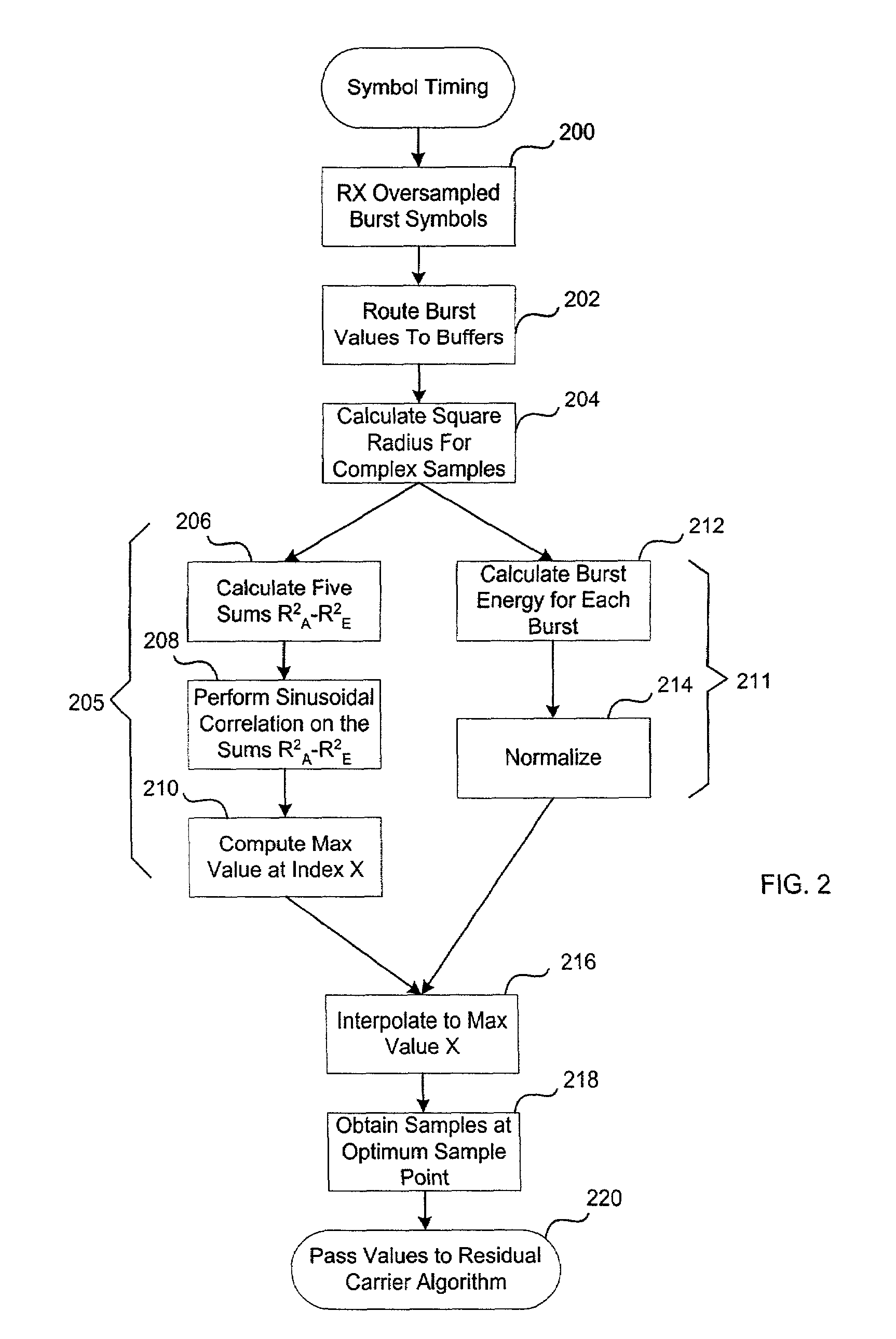Star receiver burst processing
a burst processing and receiver technology, applied in the field of communication receivers, can solve the problems of increasing the difficulty of providing cost-effective, inconvenient processing, and inability to accurately demodulate each record, so as to achieve accurate demodulation of each record
- Summary
- Abstract
- Description
- Claims
- Application Information
AI Technical Summary
Benefits of technology
Problems solved by technology
Method used
Image
Examples
Embodiment Construction
[0017]The disclosed architecture is an efficient burst reception algorithm capable of processing records of burst information in the presence of significant channel noise. The sampled burst is stored and processed as an entire block. Processing is then performed on the entire block. This “record processing” is superior to conventional “acquire-and-track” processing where a large preamble is utilized to initiate “control loops” for achieving and tracking timing and carrier error.
[0018]Referring now to FIG. 1, there is illustrated a general block diagram of return link burst processing, according to a disclosed embodiment. Generally, the return link allows for variable modulation and coding formats within a MF-TDMA (Multiple Frequency-Time Division Multiple Access) structure. With TDMA, multiple users share access to a common channel, or carrier. The carrier is divided into a set of time slots, N, with a user assigned access to a specific slot (or slots). The technique is efficient in...
PUM
 Login to View More
Login to View More Abstract
Description
Claims
Application Information
 Login to View More
Login to View More - R&D
- Intellectual Property
- Life Sciences
- Materials
- Tech Scout
- Unparalleled Data Quality
- Higher Quality Content
- 60% Fewer Hallucinations
Browse by: Latest US Patents, China's latest patents, Technical Efficacy Thesaurus, Application Domain, Technology Topic, Popular Technical Reports.
© 2025 PatSnap. All rights reserved.Legal|Privacy policy|Modern Slavery Act Transparency Statement|Sitemap|About US| Contact US: help@patsnap.com



